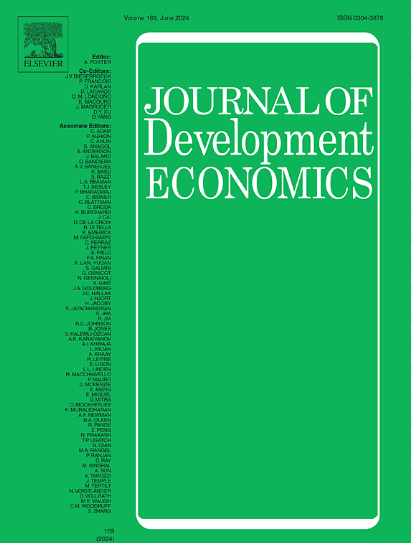矿业政策改革与国内冲突:来自缅甸的证据
IF 4.6
1区 经济学
Q1 ECONOMICS
引用次数: 0
摘要
本文通过考察资源收缩而非扩张如何影响国内暴力,颠覆了标准的资源冲突范式。利用2016年缅甸暂停发放新采矿许可证的禁令,我使用了一种新的空间分解数据库,将采矿活动与2011-2020年的地理编码冲突事件联系起来,实施了差异中的差异策略。这一收缩导致冲突事件减少了69%,特别是暴力和致命事件,在以前获得许可的城镇。这种影响在少数民族聚居区、贫困地区和偏远地区更为明显。引人注目的是,该分析揭示了积极的空间溢出效应:邻近非矿区的冲突也有所减少,这表明资源开采的减少扩散了和平,而不是取代了暴力。证据支持三种机制:(1)较低的矿产租金限制了武装团体的融资;(2)劳动力向生产部门的再分配增加了暴力的机会成本;(3)精英阶层租金的降低缓解了当地的不平等,抑制了基于不满的动员。本文章由计算机程序翻译,如有差异,请以英文原文为准。
Mining policy reform and civil conflict: Evidence from Myanmar
This paper inverts the standard resource-conflict paradigm by examining how resource contraction, rather than expansion, affects civil violence. Exploiting a 2016 moratorium in Myanmar that halted new mining licenses, I implement a difference-in-differences strategy using a novel spatially disaggregated database linking mining activity with geo-coded conflict events from 2011–2020. The contraction led to a 69% reduction in conflict incidents — particularly violent and fatal events — in previously licensed townships. The effects were stronger in ethnic homelands, poorer areas, and remote regions. Strikingly, the analysis uncovers positive spatial spillovers: conflict also declined in neighboring non-mining areas, suggesting that reduced resource extraction diffuses peace rather than displacing violence. Evidence supports three mechanisms: (1) lower mineral rents constrained armed group financing; (2) labor reallocation to productive sectors increased the opportunity cost of violence; and (3) reduced elite rents mitigated local inequality, dampening grievance-based mobilization.
求助全文
通过发布文献求助,成功后即可免费获取论文全文。
去求助
来源期刊

Journal of Development Economics
ECONOMICS-
CiteScore
8.30
自引率
4.00%
发文量
126
审稿时长
72 days
期刊介绍:
The Journal of Development Economics publishes papers relating to all aspects of economic development - from immediate policy concerns to structural problems of underdevelopment. The emphasis is on quantitative or analytical work, which is relevant as well as intellectually stimulating.
 求助内容:
求助内容: 应助结果提醒方式:
应助结果提醒方式:


